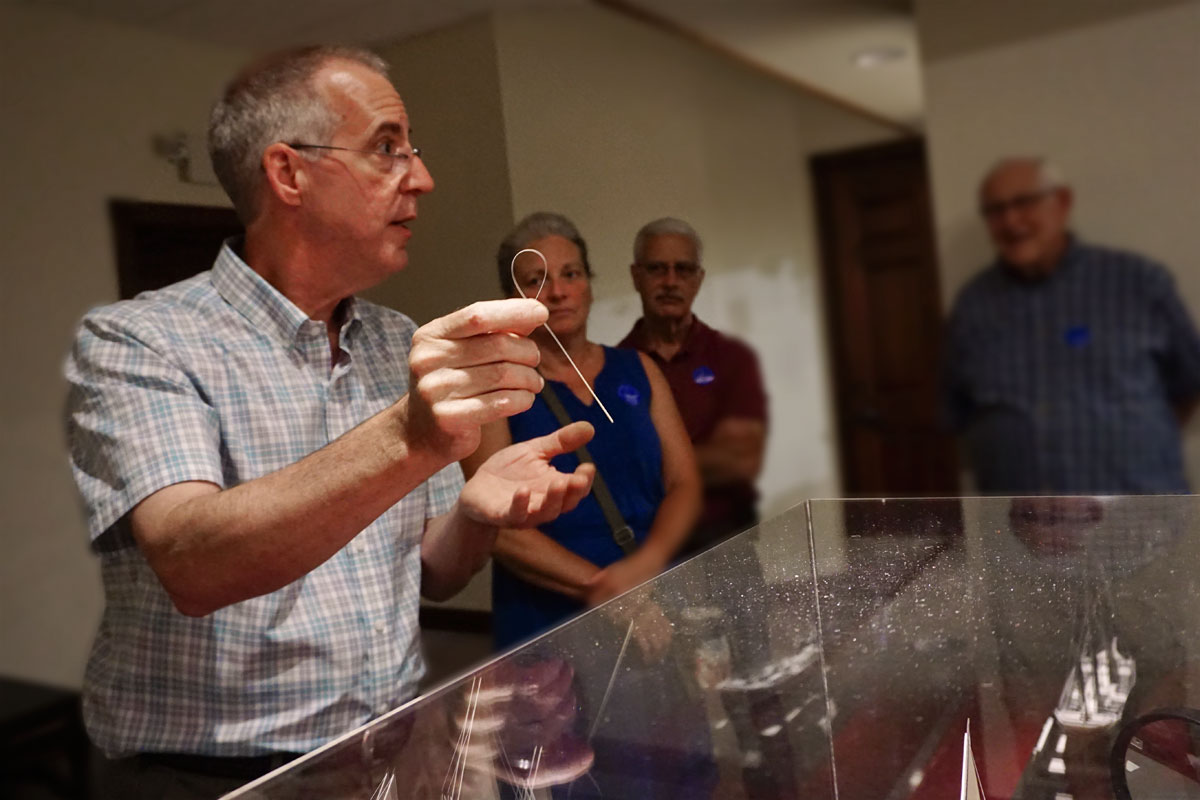Traveling transports me to locals I never thought of going and unfamiliar places of being. While in Walnut Creek, Ohio, awaiting the repairs on our trailer we organized a few touristy things to do on the extensive list of places to visit and shop in the area.
© 2018 Louise Levergneux, a daily scene in Walnut Creek, Ohio
I devoted a couple of hours at the exhibit of nationally known maritime artist David Warther, a fifth-generation carver of Swiss heritage. In the breathtaking Amish countryside of Sugarcreek, Ohio, David records the history of the ship from 1st Dynasty Egypt, 3,000 BC, to the present day.
© 2018 Louise Levergneux, David talking about the ships he carves
© 2018 Louise Levergneux, David Warther's carving of the Lioness of Thebes, 1190 BC
© 2018 Louise Levergneux, the creation of the Royal Ship of Tutankamen, 1335 BC by David Warther
© 2018 Louise Levergneux, David Warther's creation of the Star of Memphis, 1350 BC
© 2018 Louise Levergneux, David's carving of the Royal Ship of Queen Hatshepsut, 1500 BC
With over 80 major works in the collection, David carves daily in his on-site workshop utilizing antique ivory and ebony wood. His works are designed using blueprints and drawings furnished by maritime scholars and researchers worldwide.
© 2018 Louise Levergneux, David Warther's creation of Bonhomme Richard, 1779 AD
© 2018 Louise Levergneux, one of David's exhibit room and carving studio in the background
David's carvings are made of legal pre-ban ivory. He has become an expert in knowing the laws and regulations of buying, selling and gifting old legal estate elephant tusks and ivory carvings within the United States.
© 2018 Louise Levergneux, David explains the hand filing and sanding technique of making the ivory rigging lines
The rigging on his ships is made of his "ivory string"; a technique that is a signature of his artwork. These ivory threads are seven-thousandths of an inch in diameter (.007"), twice the thickness of a human hair.
David engraves the highly polished antique ivory through a process known as scrimshaw where fine lines are scored on the ivory's surface with a hand-held stylus. Later, when ink is applied to the scored surface, the microscopic pores in the ivory absorb the ink while the polished areas remain white. The scrimshaw process allows the intricate details of the ship's planking, doors, and windows to come to life.
© 2018 Louise Levergneux, details of the scrimshaw effect where fine lines are scored, Lightning, 1854 AD
© 2018 Louise Levergneux, David's carving of the Wanderer, 1878 AD
When his art project is complete, David expects to have close to 100 carvings that will convey the progress man has made in shipbuilding over the past 5,000 years.
The viewing of the exhibit and the conversation with David were worth being a tourist for an afternoon. What will I encounter next? Are you on the path of my travels? Will I discover your work throughout my journey?



















